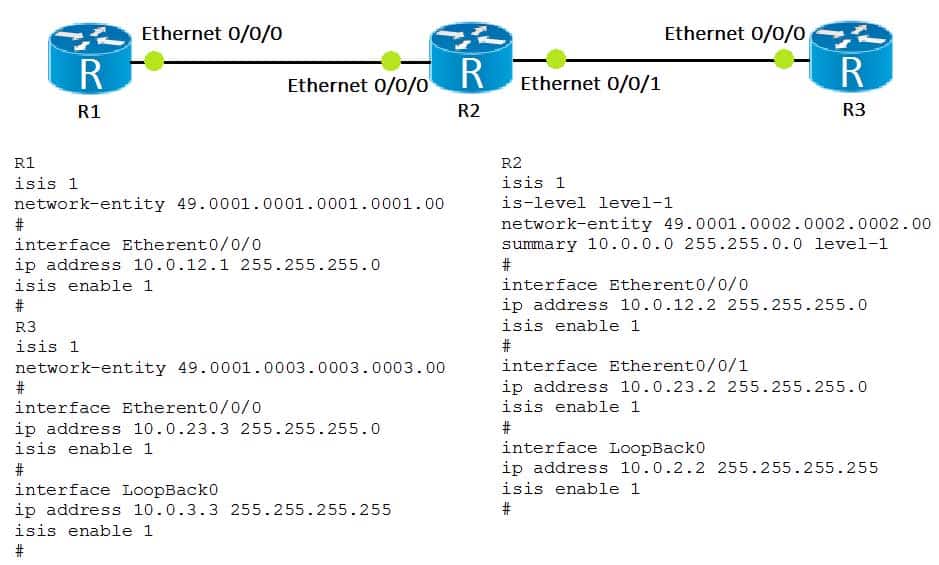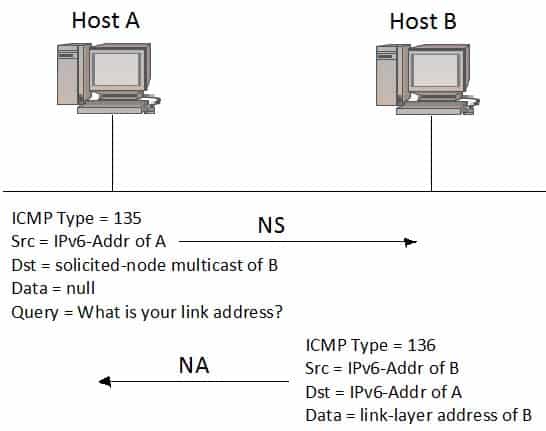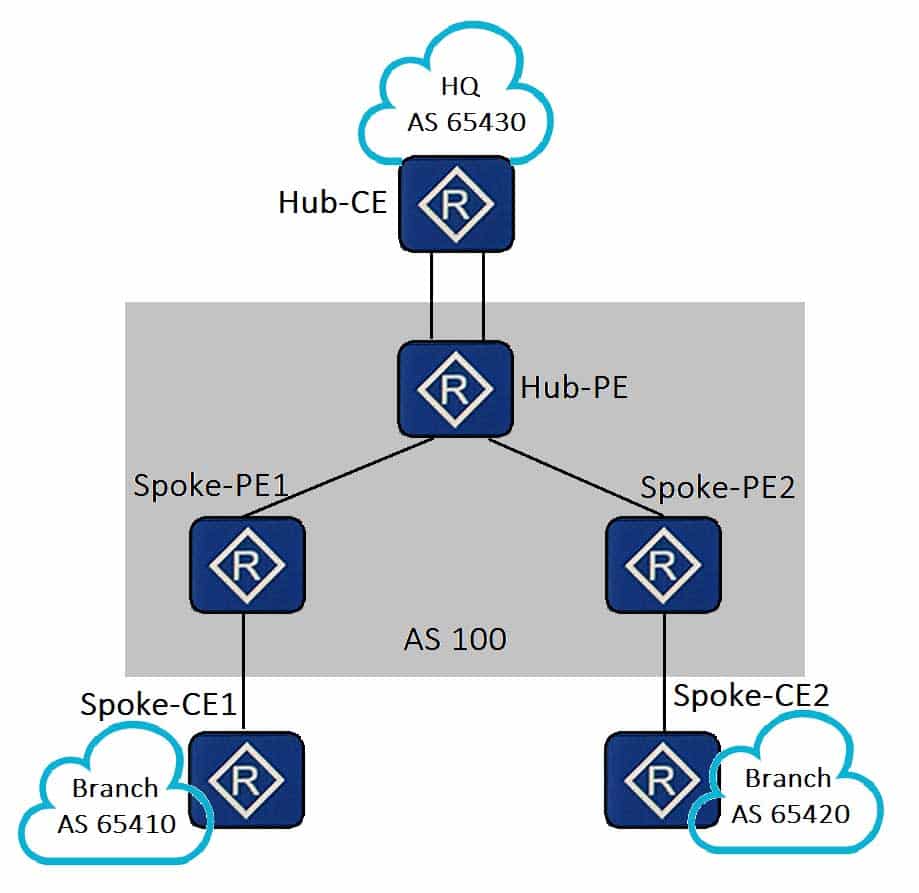H12-261 : HCIE-R&S (Written) (Huawei Certified Internetwork Expert-Routing & Switching) : Part 05
-
Which of the following statements regarding Filter-policy is true?
- An IP-prefix list can be used to filter routes or filter traffic.
- Filter-policy can be used on an ASBR in OSPF to filter Type 5 and Type 7 LSAs.
- Filter-policy can filter received or advertised link state information, and route attributes can be modified.
- Only the default routes match the IP prefix list configured using the ip- ip-prefix 1 deny 0.0.0.0 less-equal 32 command.
-
Which of the following AS-_Path attribute values can be matched by the AS-Path filter configured using ip as-path filter 1 permit .*(100|400$command?
- 100
- 3100
- 300 4200
- 1234 1400
-
Which of the following statements regarding the stub area and NSSA in OSPF is false?
- The Type 5 LSA cannot be flooded to a stub area, but can be flooded to an NSSA.
- The Type 3 LSA can be flooded to a stub area and an NSSA.
- The Type 4 LSA cannot be flooded to a stub area and an NSSA.
- The Type 7 LSA cannot be flooded to a stub area, but can be flooded to an NSSA.
-
After the shutdown command is run on one of two directly connected devices that establish an IBGP peer relationship, the BGP connection will not be torn down immediately.
- TRUE
- FALSE
-
Type 5 LSAs in OSPF are used to transmit external routes. Which of the following statements regarding Type 5 LSAs is false?
- Type 5 LSAs are advertised by ASBRs and flooded on OSPF networks except stub areas and NSSAs.
- Filtering policies can be configured on ABRs or ASBRs to filter Type 5 LSAs.
- A Type 5 LSA contains the FA address, which is 0.0.0.0. The FA address is reserved only and does not take effect.
- Routers in the same area as the ASBR can calculate external routes through intra-area LSAs and Type 5 LSAs.
-
Which of the following statements regarding the stub area in OSPF are true?
- A virtual link cannot pass through a stub area.
- A backbone area cannot be configured as a stub area.
- Type 7 LSAs cannot be flooded to a stub area.
- A stub area contains no ASBR.
-
Which of the following statements regarding BGP confederations is false?
- By default, sub-AS numbers of a confederation are advertised to BGP peers outside the confederation.
- A BGP confederation divided an AS into several sub-ASs. ASs outside a confederation still consider the confederation as an AS.
- Confederations can easily detect routing loops inside an AS because EBGP is run between sub-AS’s.
- Sub-ASs within a BGP confederation can use private AS numbers. For Huawei NE and AR routers, a maximum of 32 sub-ASs can be configured in a BGP confederation.
-
Which layers are shared in the OSI reference model and TCP/IP model?
- Presentation layer
- Application layer
- Transport layer
- Session layer
- Data link layer
-
In an existing OSPF network, which types of LSAs cause the SPF calculation?
- Type 1 LSA
- Type 3 LSA
- Type 4 LSA
- Type 2 LSA
- Type 5 LSA
-
Which of the following statements regarding IS-IS route leaking are true?
- IS-IS route leaking can be configured in IPv6 environments.
- In IS-IS route leaking, the routes to be leaked cannot be summary routes.
- IS-IS route leaking will not cause neighbor flapping.
- IS-IS route is used to prevent route loops.
- IS-IS route leaking can be configured on Level-1 routers.
-
Which of the following statements regarding IS-IS LSP fragment extension is true?
- LSP fragment extension enables an IS-IS router to generate multiple LSP fragments to carry more IS-IS information.
- An IS-IS router can generate a maximum of 1024 LSP fragments.
- LSP fragment extension is implemented by adding virtual systems, with a maximum of 1000 virtual systems supported.
- LSP fragment extension is also valid for Hello PDUs.
-
Which of the following statements regarding IS-IS route summarization is true?
- Route summarization can be configured and takes effect on all types of routers.
- Route summarization takes effect only on Level-2 routers.
- Route summarization takes effect only on Level-1 routers.
- Route summarization takes effect only on Level-1-2 routers.
-
Which of the following statements is true according to the topology shown?

H12-261 HCIE-R&S (Written) (Huawei Certified Internetwork Expert-Routing & Switching) Part 05 Q13 016 - Routing entries 10.0.3.3/32 and 10.0.0.0/16 exist in the IP routing table of R1.
- Routing entries 10.0.2.2/32 and 10.0.3.3/32 exist in the IP routing table of R1.
- Because routing summarization is configured on R2, only the routing entry 10.0.0.0/16 exists in the IP routing table of R1.
- Routing entries 10.0.2.2/16 and 10.0.0.0/16 exist in the IP routing table of R1.
-
Which of the following statements regarding BGP attributes is true?
- A route can have only one value for the Community attribute.
- The number of the neighboring AS is displayed to the right of the AS_path list of a BGP routing entry.
- The Local_Pref attribute is exchanged only between EBGP peers and is not advertised other ASs.
- When advertising a route learned from an EBGP peer to an IBGP peer, the BGP speaker does not change the Next_Hop attribute of the route.
-
Many transition technologies have been adopted to replace IPv4 addresses on networks with IPv6 addresses. These technologies are categorized into IPv4/IPv6 coexistence technologies and IPv4/IPv6 interoperability technologies. Which of the following technologies are considered to be IPv4/IPv6 coexistence technologies?
- NAT64
- ISATAP
- IPv6 over IPv4
- Dual Stack
-
Does the following figure correctly show the process of obtaining the link-layer address using NDP?

H12-261 HCIE-R&S (Written) (Huawei Certified Internetwork Expert-Routing & Switching) Part 05 Q16 017 - TRUE
- FALSE
-
You are assigned the task of compressing an IPv6 address as much as possible. If the original IPv6 address is 2013:0000:130F:0000:0000:09C0:876A:130B, which of the following is the IPv6 address in its compressed format?
- 213::13F::9C0:876A:13B
- 2013::130F::09C0:876A:130B
- 2013:130F:0:0:9C0:876A:130B
- 2013:0:130F:0:0:09C0:876A:130B
- 2013:0:130F::09C0:876A:130B
-
Which of the following statements regarding the packet processing method in the MPLS network model are false?
- The device discards IP packets that enter the MPLS domain.
- An LSR does not remove any label.
- A Label Switched Path (LSP) is determined and established through various protocols during the packet forwarding process.
- Both LERs and LSRs distribute labels.
-
On an intra-AS MPLS BGP VPN, data packets are encapsulated with two MPLS labels before being sent to the public network. Which of the following statements regarding the labels is false?
- By default, a router assigns the same label value to all VPNv4 routes destined for the remote PE.
- The egress PE uses the inner label to determine the egress CE which packets are sent.
- Two labels are used on an MPLS BGP VPN: public network label (outer label) and VPN label (inner label).
- VPN labels are distributed by MP-BGP when routing information is transmitted. Public network labels are distributed by LDP.
-
As shown in the figure below, an enterprise wants to implement secure access between the headquarters and branches through MPLS VPN. VPN traffic of branches must be forwarded through the headquarters for traffic monitoring. Which of the following statements regarding this solution is false?

H12-261 HCIE-R&S (Written) (Huawei Certified Internetwork Expert-Routing & Switching) Part 05 Q20 018 - When the Hub-CE and Hub-PE use EBGP to transmit routing information, the Hub-PE must be able to accept routes with the AS number repeated once so that routes advertised by the Hub-CE can be received.
- OSPF can be used to exchange routing information between Hub-CEs and Hub-Pes as well as between Spoke-Pes and Spoke-CEs.
- BGP can be used to exchange VPN routing information between CEs and Pes.
- The MP-IBGP peer relationship can be established between Spoke-Pes to exchange VPN routing information.
Subscribe
0 Comments
Newest